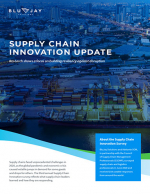From the First Mile to the Final Mile
In this whitepaper, we discuss how technology is key to ensuring the efficient and effective movement of goods around the world and how transport management and shipping solutions need to combine with new mobile technology tools to ensure that every mile of the journey runs smoothly.
How to offer local service on a global scale: from the first mile to the final mile
Meeting customer expectations when it comes to the delivery of their goods is becoming ever more challenging as access to the global marketplace increases.
Technology is key to ensuring the efficient and effective movement of goods around the world, but ironically it is often in the final stage, the so-called “last mile”, that all the good work can come undone.
There have been many, many advances in the movement of goods and products through the ages. Initially, goods were transported from village to village by horse and cart, then by barge and boat.
The advent of steam power led to the fast transportation of goods by rail and the invention of the internal combustion engine meant that trucks could travel and take goods where trains could not.
Advances such as these have helped companies to deliver goods to a wider and more geographically spread customer base.
Fast-forward to today and the marketplace is bigger than ever. The rise of the internet and omnichannel shopping has given consumers the ability to buy what they want, from where they want, when they want.
The consumer may be a single customer who has ordered just one small item from a specialist seller in a country that is thousands of miles away, or a large business that has sourced a product or component it requires in bulk that it needs to be delivered to many locations.
What has not changed in all these years is the expectations of the customer at the end of the journey waiting to receive the goods. They want their item delivered in the shortest amount of time, undamaged and with minimum amount of inconvenience to them and their wallet.
This is where, in some cases, the village shop delivering goods by bicycle to a customer in the same village, or the cart taking the wool from the farm to the spinners and weavers in the neighbouring village, had an advantage.
The small market meant that the sellers and suppliers knew their customers, knew where they would be and could deliver when needed.
The challenge for today’s organisations is, therefore, to provide this kind of local service on a global scale.
What’s Related




Favorites





